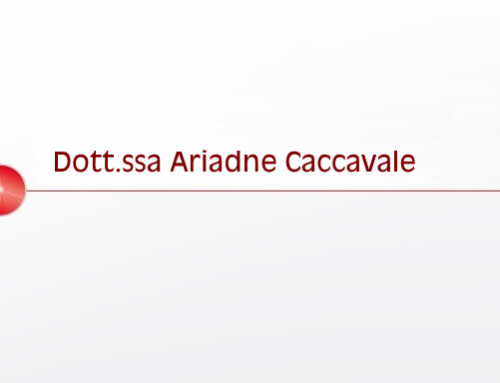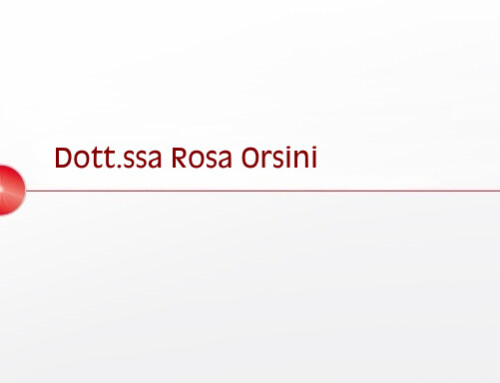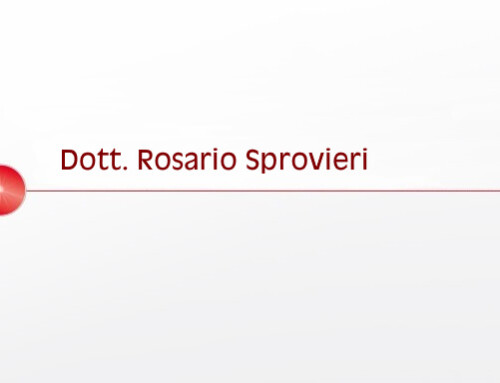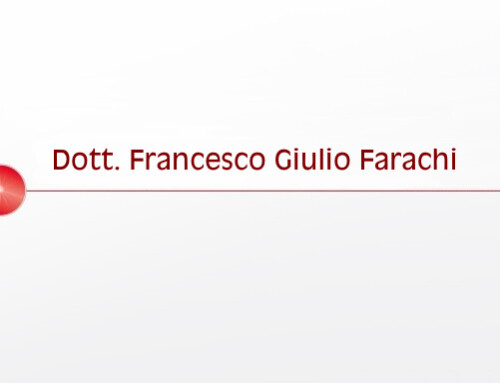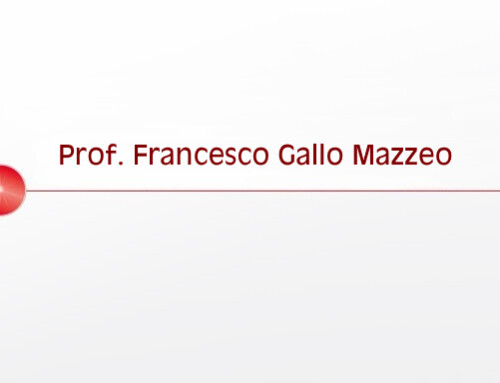
![]()
Una fisionomia del visibile
Francesco Giulio Farachi
La ricerca espressiva che ha condotto Alessandra Casciotti fino a questa esposizione si è sviluppata con la tenacia e la sensibilità proprie del lavoro d’artista. Sono consapevole del fatto che alcuni trovino imbarazzante l’uso del termine “lavoro” riferito all’operato degli artisti. Ma nel caso specifico lo trovo invece massimamente appropriato, perché nella Casciotti, e più che in tanti altri, gli aspetti ispirativi e poetici si sono sempre scrupolosamente accompagnati a una disciplina di sperimentazione, non solo tecnica, ma anche e soprattutto personale e umana. Questo fa sì che nei suoi quadri siano evidenti l’intenzione e l’attenzione a trasferire in essi, oltre al rigore di un ammaestramento dell’elemento pittorico e della raffigurazione, anche la coscienza di un ordine delle cose che deve essere conosciuto per essere interpretato.
Tanto più che la pittura della Casciotti è una pittura “significante”, in cui cioè la rappresentazione visiva non è mai fine a sé stessa, neanche nel minimo particolare, ma implica costituzionalmente il rimando a un senso, a una ragione, a una qualità ulteriori. Per essere ancora più chiari, i caratteri simbolici non sono solo intrinseci (come in qualsiasi opera d’arte, dato che ogni opera d’arte di per sé esprime un plus-valore, un valore/senso/significato soprastante e in più e altro, rispetto alla pura e semplice materia o rappresentazione), ma sono essi stessi fulcro, aspetto esteriore e soggetto-oggetto di ogni dipinto. Il che farebbe facilmente accostare questo lessico espressivo a quello dei pittori simbolisti.
Troppo facilmente…
Infatti nella Casciotti mancano quasi del tutto quelle atmosfere attonite e trasognanti, liquide, da “deragliamento dei sensi”, e quelle distanze d’incomunicabilità, di non-sense, di muto psichismo che sono invece distintive dei simbolisti (come anche dei surrealisti e dei metafisici, che sono per molti versi a loro prossimi).
La pittrice, da parte sua, si ritaglia invece un mondo di riferimenti, è vero, a volte fascinosi, nascosti, a volte eruditi, sapienziali, ma immediatamente individuabili, sempre correlabili a principi e a sentimenti ben precisi e riconosciuti che ella vuole esprimere e partecipare. Per questo le è cara, ed è una costante del suo orizzonte pittorico, la superficie del mito e delle antichità, perché è una trasposizione visionaria del presente umano e delle sue categorie fondanti, perché è una realtà che implica lo sforzo di conoscenza, che non nega il mistero e l’ineffabile, ma li adopera come strumenti anch’essi dell’esperienza e della crescita umane.
Anche visivamente poi, la pittura ha un’impronta estetica che è invariabilmente un codice aperto, privo di sovrastrutture, libero di accogliere luci e tensioni cromatiche, limpido nel modulare geometrie e piani ottici. Si percepisce chiaramente che tale facilità di lettura non si chiude in sé, ma, proprio per il fatto di esser così, pervade e riecheggia i contenuti concreti dell’immaginario allegorico.
Se ogni opera è dunque anche dal punto di vista tecnico-formale allusione e metafora, rimando a una più complessa natura delle cose, dei personaggi, dei momenti emotivi ritratti; al tempo stesso, la successione e intersezione degli ordini di percezione persegue un intento chiarificatore, di comprensione, di disvelamento ed esemplificazione dei contenuti.
Questi simboli della Casciotti sono più che altro degli emblemi, non occultano ma dichiarano.
Nelle opere che direttamente si ispirano al mito e alla tradizione, dalle prime realizzate fino alle più recenti (penso quindi ad Amore Trionfante, a Incanto orfico, alla complessa composizione classicheggiante di Espressioni dell’Arte, e ancora a L’Autunno e La Primavera, che completano il ciclo de Le stagioni) la figurazione si raccoglie in un’impressione di prevalente bidimensionalità, entro una leggerezza di corporeità impalpabili, dove masse, volumi e prospettive si segnano solo nella definizione dei chiaro-scuri e delle velature cromatiche, lasciando che contro gli sfondi, intorno alla polita essenza dei corpi e degli oggetti, si rapprenda primariamente l’accezione del riferimento simbolico, e si modelli, pura e netta, la luce.
È pertanto una luce che illumina vita e interiorità, è intuizione dell’esistente, spiritualità di bellezza e armonia che Alessandra Casciotti spinge a sondare per sé e per chi osserva. Ed è la stessa luce, la stessa tensione energetica ed ellittica che agisce nei lavori astratti o dove l’elemento figurale diviene componente esplicativo di un pattern immateriale e concettuale (si guardi ad esempio a Ciclicità della vita o, nel secondo caso, a Opportunità).
Non si avverte, e non c’è, perciò uno iato fra i dipinti figurativi e quelli astratto-geometrici. Intanto, anche perché non si potrebbe per questi ultimi con certezza affermare una totale aniconicità dell’immagine; rimane la suggestione di una raffigurazione, il sottinteso di una forma non solo sublimata e fantastica, pur sempre attinente alla realtà concreta. Di converso, nella produzione figurativa, a volte è assente una stretta associazione realistica fra i soggetti, e la composizione si bilancia invece su un gioco di astrazione logica che viene resa anche luministica e visiva, : è il caso di tele come ad esempio Le Metamorfosi, o Tyche, o la già citata Amore Trionfante, di tutti quei dipinti cioè dove manca, oppure è latente, il legante di una descrizione/narrazione o di una vera ambientazione/contestualizzazione e dove la figura si staglia come flash praticamente assoluto di colore e forma; o ancora come, sempre per esempio, nei quadri La luce del Mito o, di nuovo, Incanto Orfico, in cui architetture e scenografie danno all’occhio il ritmo psichico di una scansione geometrica e modulare.
Come si vede quindi, forma naturale e forma mentale, forza istintiva della rappresentazione e artificio del colore, vivono sempre in simultaneità nei modelli immaginativi dell’artista. Tuttavia è anzitutto il processo poetico che è identico e coerente in tutte le opere della pittrice. L’immagine si fa attraverso la sintesi lirica e volitiva di idea e visione, equilibra il dato di fatto di colori e superficie con l’immaterialità dei valori, dei sentimenti, dei significati. Ma poi è un incrocio magico. La fisicità della tela e dei pigmenti accoglie, e diventa essa stessa, l’intangibile consistenza della proiezione fantastica, dell’arte, della bellezza; simultaneamente le idealità e le passioni prendono corpo come dense stesure dei fondi, nel tradursi sostanza degli olii viscosi e saturi. Figura o non-figura, geometrico oppure ornato, non è solo questione di medesima mano e medesimo stile, ma ogni quadro di Alessandra Casciotti esce dal medesimo universo di corrispondenze paradigmatiche fra invenzione e realtà, per invadere lo sguardo al di là della tela.
Per questo, nell’attuale esposizione, la presenza di dipinti così vari dal punto di vista sia tematico sia formale è pensata in funzione, non di restituire una silloge meramente inventariale della produzione dell’artista, quanto di approntare una stasi di connesse visioni, ad annullare quasi la percezione per sequenza frammentata, ma anzi affinché risulti e permanga la sensazione d’insieme di un processo creativo che, attraverso il filtro dell’operare pittorico e della meticolosa ricerca formale, distilla emozioni, memoria, pensiero e affascinazioni. Tutti questi quadri posseggono un’anima comune, che è quella del concetto che li sostiene.
La convinzione che un’idea possa avere una conseguenza sul modo di apparire del mondo, si trasporti in una fisionomia del visibile e lasci a noi lo stupefatto ardore di afferrarne i tratti, recupera per l’artista, e per tutti noi che osserviamo, una dimensione di relazione fisica e sensoriale con aspetti d’umanità intima e potente. Ed è forse proprio per tale “istintuale intenzione” della Casciotti di avvertire e far avvertire affinità e senso, che tutti questi quadri, persino quelli più controllati da assetti geometrici e ricombinazioni ottiche, sono come attraversati da una sorta di fluido erotismo, da una coscienza e da un desiderio del bello che l’artista dosa con sensibilità tutta femminile. Cosicché non è tanto o soltanto per la morbida sensualità ad esempio dei nudi, né per la calda compattezza delle tessiture cromatiche, non è in generale per il suadente manierismo della rappresentazione… ma, osservate, questi lavori abitano la parete e si concedono a una confidenza con lo sguardo da far perdere il senso di tempo e spazio, celano e immediatamente disvelano i loro segreti, proprio come in un gioco d’amanti.
Basta lasciarsi andare a questa seduzione contemplativa e liberatoria per capire l’approccio che Alessandra Casciotti ha con i suoi lavori: un rapporto di reciproco abbandono a emozioni e sensazioni che l’artista trasferisce alla tela, che la tela restituisce all’artista.
È un modo di articolare e sublimare quello che è un processo spontaneo in ogni essere umano, crearsi propri concetti e una propria immagine mentale del mondo. Processo che nell’artista diventa delineazione di personificazioni e ordini attraverso cui la propria esperienza fisica e psichica, e il mistero e il fascino in esse, si compongano in visione armonica; e visione che a sua volta poi diventi opera, quindi superficie di contatto tangibile e ormai incontrovertibile con il mondo esterno, con l’alterità di chi osserva, con l’instabilità anche del proprio io che col tempo cambia e cresce.
Da qui il titolo – Forma mentis – che di questa mostra immediatamente dichiara la complessa unità, il profilarsi, nel lavorio del tempo e secondo il rinsaldarsi dei principi, di un carattere distintivo, di un modo di concepirsi e di stare nel mondo, con in più la lusinga d’incontrare questa personalità del vivere nell’invenzione immaginifica della materia pittorica. Alessandra Casciotti, con il suo cosmo di significati e archetipi, con i suoi riferimenti ideali di bellezza e verità, con il proprio riversarsi, sensazione e azione, nell’accensione dei suoi colori, fa dell’arte una manifestazione, insieme passionale e ragionata, di una perfetta libertà, in cui molto implicare, in cui molto accertare della nostra stessa fantasia, della nostra stessa realtà.
![]()
A physiognomy of the visible
Francesco Giulio Farachi
The expressive research that led Alessandra Casciotti to this exhibition developed with the tenacity and sensitivity typical of the artist’s work. I am aware of the fact that some find it not appropriate to use the term “work” referring to the work of an artist. But in this specific case I find it most appropriate, because in Casciotti, more than in many others, the inspirational and poetic aspects have always been scrupulously accompanied by a discipline of experimentation, not only from a technical point of view, but also and above all personal and human. This means that in her paintings it is clear the intention and the attention to transfer, in addition to the rigor of an instruction of the pictorial element and of the representation, also the conscience of an order of things that must be known to be interpreted.
specially since the painting of Casciotti is a “meaningful” one, one in which visual representation is never an end in itself, even in the smallest detail, but it constitutionally implies the reference to a sense, a reason, a further quality. To be even clearer, the symbolic characters are not only intrinsic (as in any work of art, since every work of art in itself expresses a plus-value, a value / meaning above and more, compared to pure and simple matter or representation), but they are themselves fulcrum, external appearance and subject-object of each painting. Which would easily bring this expressive lexicon to that of symbolist painters.
Too easily …
In fact, in Casciotti we find missing almost all those atmospheres of dumbfounded and dreamy, liquid, from “derailment of the senses”, and those distances of incommunicability, of non-sense, of dumb psychism that are instead distinctive of symbolists artists (as well as surrealists and metaphysicians, who are in many ways next to them).
The painter, for her part, instead carves out a world of references, it is true, sometimes fascinating, hidden, sometimes erudite, sapiential, but immediately identifiable, always correlated to principles and feelings well defined and recognized that she wants to express and share. This is why it is dear to her, and is a constant of her pictorial horizon, the surface of myth and antiquity, because it is a visionary transposition of the human present and its founding categories, because it is a reality that implies the effort of knowledge, which does not deny the mystery and the ineffable, but uses them as instruments also of human experience and growth.
Also visually then, the painting has an aesthetic imprint that is invariably an open code, devoid of superstructures, free to accommodate lights and chromatic tensions, limpid in modular geometries and optical planes. It is clearly perceived that such ease of reading does not close in itself, but, precisely because it is so, pervades and echoes the concrete contents of the allegorical imaginary.
If every work is therefore also from a technical-formal point of view allusion and metaphor, reference to a more complex nature of things, of the characters, of the emotional moments portrayed, at the same time, the succession and intersection of the orders of perception pursues a clarifying intent, of understanding, of unveiling and exemplifying the contents.
These symbols of Casciotti are more than anything else emblems, that do not hide but declare.
In the works that are directly inspired by myth and tradition, from the first ones up to the most recent ones (I think therefore of Amore Trionfante, Orphic Enchantment, to the complex classical composition of Espressioni dell’Arte, and again to L’Autunno e La Primavera, that complete the cycle of Le stagioni) the figuration is gathered in an impression of prevalent two-dimensionality, within a lightness of impalpable corporeity, where masses, volumes and perspectives are marked only in the definition of light and dark and chromatic veiling, leaving it to the backgrounds, around the essence of bodies and objects, primarily to represent the meaning of the symbolic reference, and where light is modelled pure and clear.
It is therefore a light that illuminates life and interiority, it is intuition of the existent, spirituality of beauty and harmony that Alessandra Casciotti pushes to probe for herself and for the observer. And it is the same light, the same energetic and elliptical tension that acts in abstract works or where the figural element becomes an explanatory component of an immaterial and conceptual pattern (for example, see Ciclicitá delle vita or, in the second case, Opportunitá).
It is not felt, and there is not, therefore a hiatus between the figurative and abstract-geometric paintings. Mainly, because it is not possible for the latter to assert a total aniconicity of the image; there remains the suggestion of a representation, the implication of a form not only sublimated and fantastic, yet always relevant to the concrete reality. Conversely, in figurative production, sometimes a close realistic association between the subjects is absent, and the composition is instead balanced on a game of logical abstraction that is also rendered luministic and visual: it is the case of paintings such as Le Metamorfosi , o Tyche, or the aforementioned Amore Trionfante, of all those paintings, that is, where there is no or maybe a latent, binder of a description / narration or of a true setting / contextualisation and where the figure stands out as a practically absolute flash of color and form; or again as, for example, in the paintings La luce del Mito or, again, Incanto Orfico, in which architectures and scenographies give the eye the psychic rhythm of a geometric and modular scan.
As we can see then, the natural form and mental form, the instinctive force of representation and the artifice of color, always live in simultaneity in the artist’s imaginative models. However, it is above all the poetic process that is identical and coherent in all the painter’s works. The image is made through the lyrical and volitive synthesis of idea and vision, balancing the reality of color and surface with the immateriality of values, feelings and meanings. But then it’s a magical crossroads. The physicality of the canvas and of the pigments welcomes, and becomes itself, the intangible consistency of the fantastic projection, of art, of beauty; simultaneously the ideals and passions take shape as dense layers of the backgrounds, in translating the substance of the viscous and saturated oils. Figure or non-figure, geometric or ornate, is not only a matter of the same hand and the same style, but each painting by Alessandra Casciotti emerges from the same universe of paradigmatic correspondences between invention and reality, to invade the gaze beyond the canvas.
For this reason, in the current exhibition, the presence of paintings that are both varied from a thematic and formal point of view is designed for a specific reason, not to return a merely inventory collection of the artist’s production, but to prepare a stasis of connected visions, to almost cancel the perception of a fragmented sequence, but rather so that the overall sensation of a creative process emerges and remains, which, through the filter of pictorial work and meticulous formal research, distills emotions, memory, thought and fascination. All these paintings possess a common soul, which is that of the concept that sustains them.
The conviction that an idea can have a consequence on the way in which the world appears, is transposed into a physiognomy of the visible and leaves us the stupefied ardor of grasping its traits: it recovers for the artist, and for all of us who observe, a dimension of physical and sensory relationship with aspects of intimate and powerful humanity. And it is perhaps because of this “instinctual intention” of Casciotti to feel and make others feel affinity and meaning, that all these paintings, even those more controlled by geometrical structures and optical recombinations, are filled by a sort of fluid eroticism, a conscience and desire for beauty that the artist doses with a completely feminine sensibility. So that it is not so much or only for the soft sensuality of nudes, for example, nor for the warm compactness of the chromatic textures, it is not in general for the seductive mannerisms of the representation … but, observe, these works inhabit the wall and grant a confidence with the ability to grant loss of the sense of time and space, they hide and immediately reveal their secrets, just like in a game of lovers.
One just needs to let go of this contemplative and liberating seduction to understand the approach that Alessandra Casciotti has with her works: a relationship of mutual abandonment to emotions and sensations that the artist transfers to the canvas, and which the canvas gives back to the artist.
It is a way of articulating and sublimating what is a spontaneous process in every human being, creating one’s own concepts and one’s own mental image of the world. Process that in the artist becomes the delineation of personifications and orders through which one’s own physical and psychic experience, and the mystery and charm in them, are formed in an harmonious vision; and vision that in turn then becomes a work, a tangible and incontrovertible surface with the outside world, with the otherness of the observer, with the instability of his ego that changes and grows with time.
Hence the title – Forma mentis – which of this exhibition immediately declares the complex unity, the identification, in the work of time and according to the strengthening of the principles, of a distinctive character, of a way of conceiving and being in the world, with in addition the flattery of meeting this personality of living in the imaginative invention of pictorial matter. Alessandra Casciotti, with her world of meanings and archetypes, with her ideal references of beauty and truth, with her own flow, sensation and action, in the explosion of her colors, makes art a manifestation, both passionate and reasoned, of perfect freedom, in which to imply, in which to ascertaining our own imagination, our own reality.

